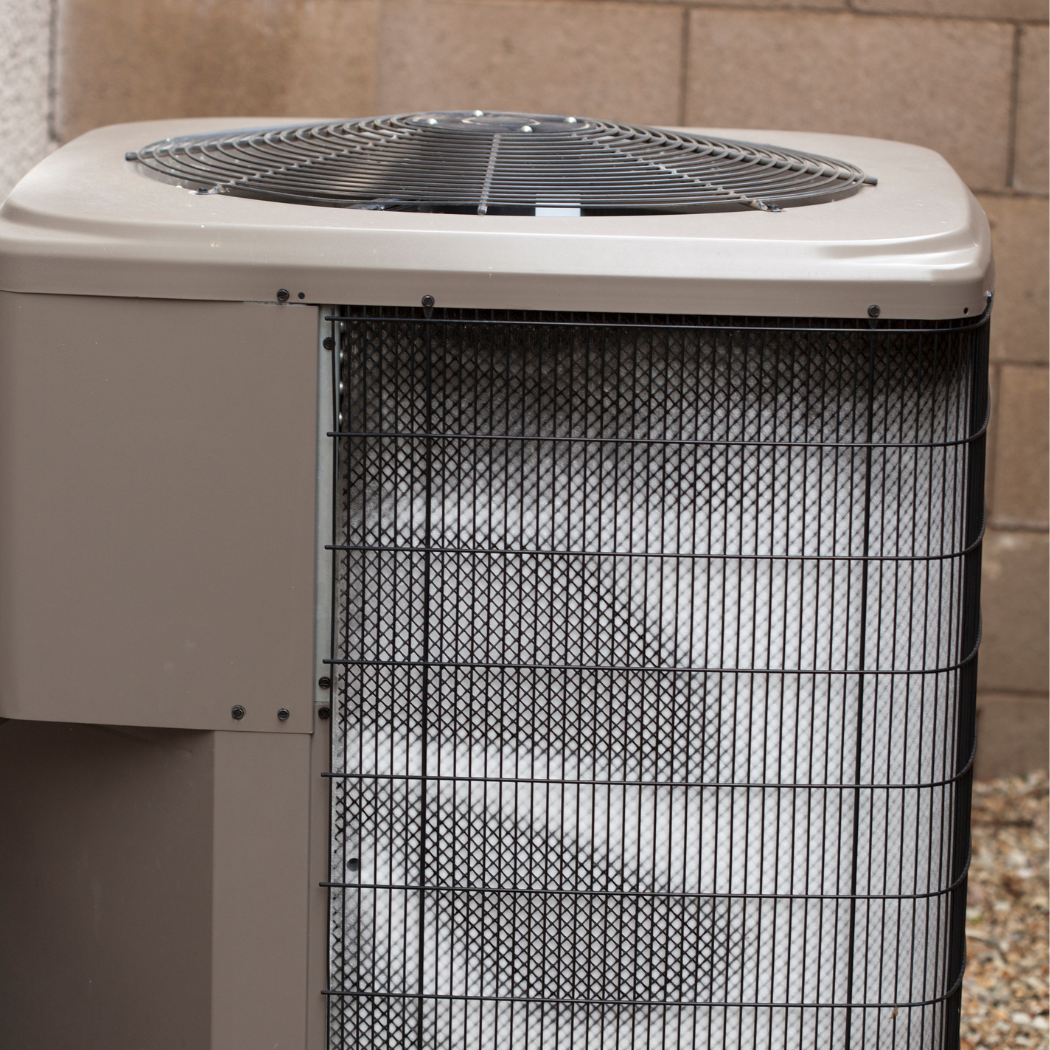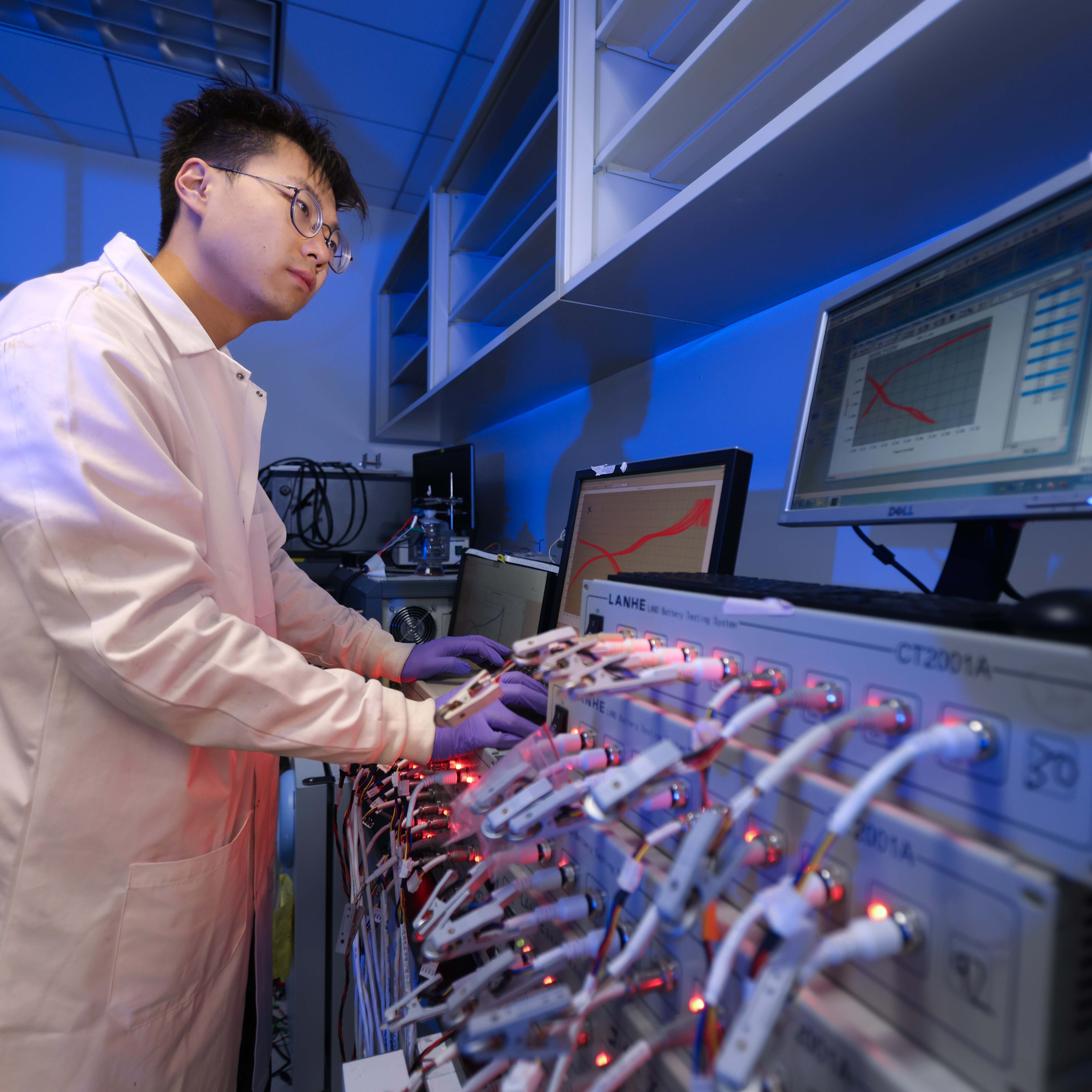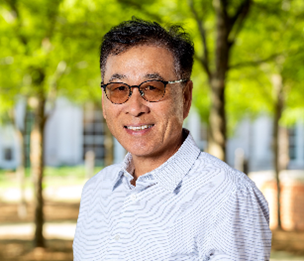News Story
A Facile and Accessible Plasma Hotter Than the Surface of The Sun
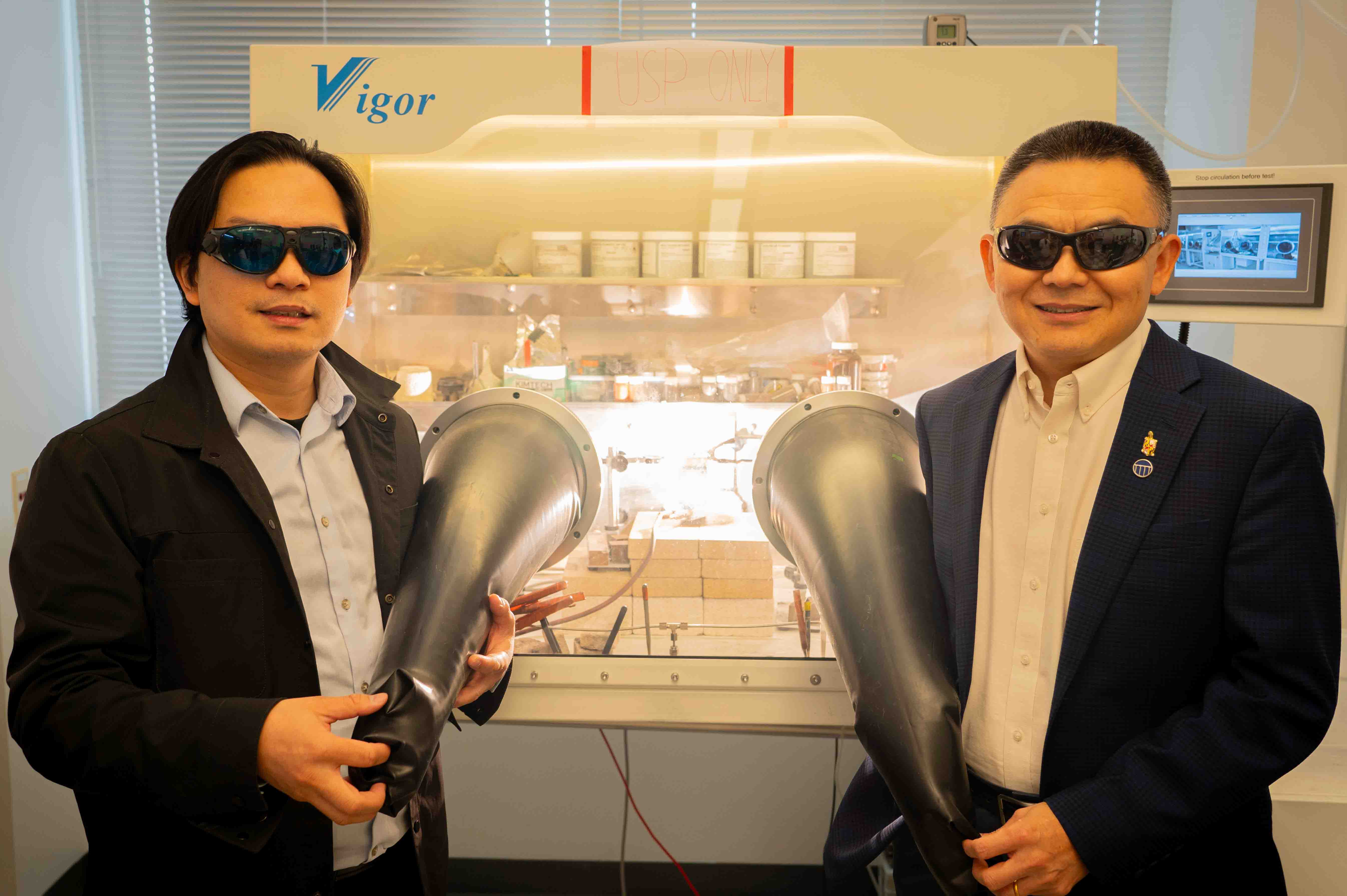
Professor Liangbing Hu and Chair JC Zhao in front of a facile plasma setup capable of 8,000 Celsius.
A joint research team from University of Maryland (UMD) and Princeton University has invented a new plasma technology capable of reaching 8,000 Celsius. The new uniform, ultrahigh-temperature, stable plasma (USP) can be easily set up at a lab using relatively low electrical voltage such as 50 volts.
The invention was recently featured in an article in Nature and was led by Professor Liangbing Hu, Distinguished University Professor from the Department of Materials Science and Engineering (MSE) and Director of the Center for Materials Innovation at UMD. Dr. Hua Xie was the first author.
Plasma is known as the fourth state of matter beyond the regular three states: solid, liquid and vapor (gas). It consists predominantly of positively charged particles known as ions and negatively charged electrons at approximately equal proportions. Plasma can be generated by splitting a gas with an intense spark as in the case of lightning bolts or subjecting a gas to an electromagnetic field.
“The ‘hairy’ electrodes are key to our invention,” Professor Hu noted. “Using carbon felt electrodes with numerous fiber tips, we created a stable, tunable plasma as hot as the surface of the Sun; yet only very low electric voltage and current are needed to initiate and maintain it.”
The unique tip-enhanced electrodes comprise of long and short carbon fibers on the surface of carbon felts. Under an applied voltage, the Joule heat generated at contacts or defective regions of the longer fibers creates small gaps that pronouncedly reduce the plasma breakdown voltage to less than 50 volts in comparison with 1,500 volts at atmospheric pressure without the fiber tips—a 30-times reduction.
Meanwhile, the short, vertically aligned fiber bundles create a concentrated electric field that expands and coalesces the gas discharge, enabling a smooth transition to a volumetric plasma.
Professor Yiguang Ju, Robert Porter Patterson Professor at Princeton University and Director of a new Department of Energy (DOE) Hydrogen Energy Earthshot Research Center (EERC) at the Princeton Plasma Physics Laboratory (PPPL), contributed to the characterization of this unique plasma formation process.
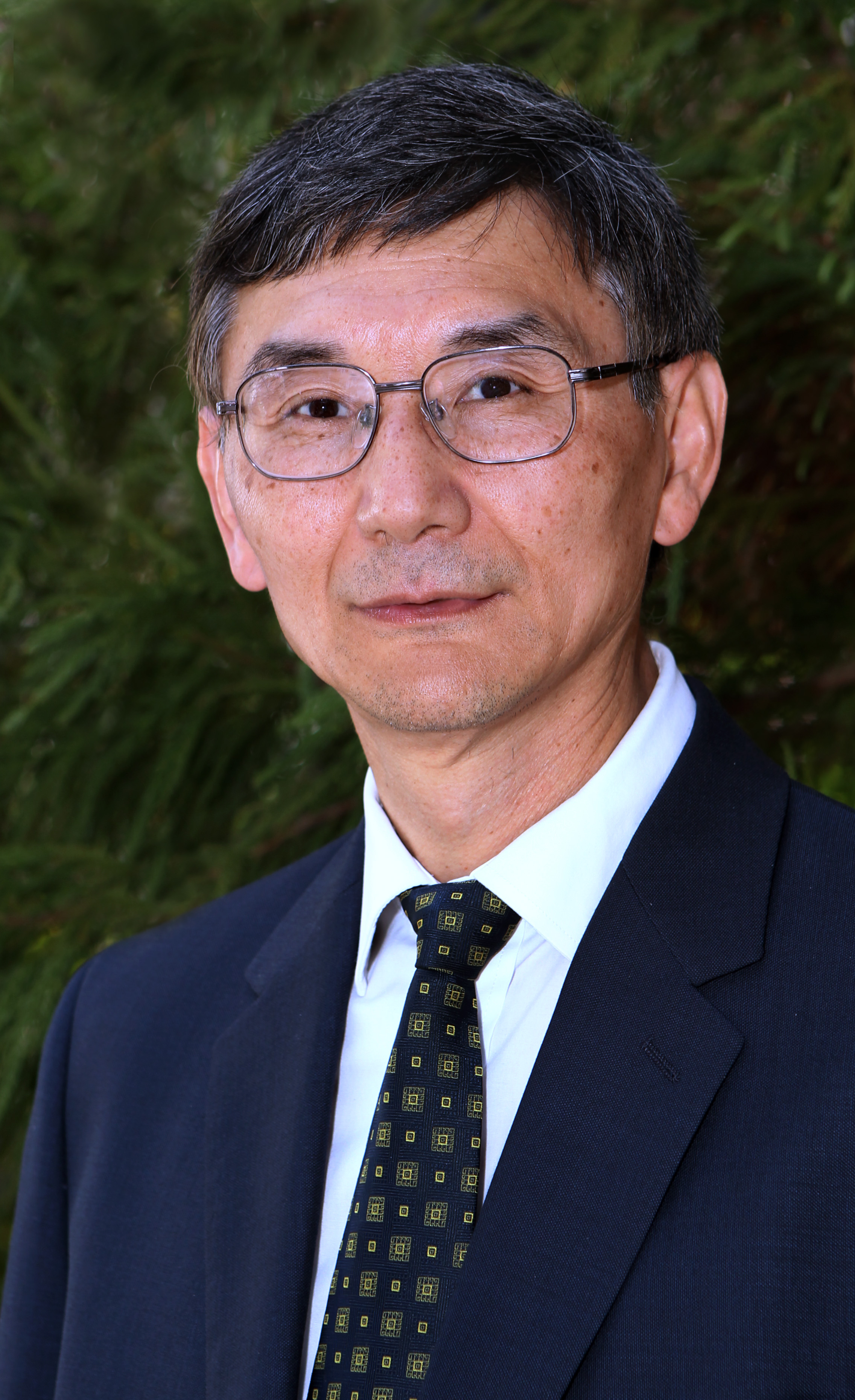
“The micro discharge and enhanced secondary electron emission enabled by the carbon fiber tips at the scale of Debye length are the game changers for lowering the breakdown voltage and increasing the plasma uniformity and stability,” said Professor Ju.
“Our USP setup is the easiest way to create an ultra-hot, steady plasma that can conveniently operate at ambient pressure,” said Professor Ji-Cheng ‘JC’ Zhao, UMD MSE Department Chair and co-corresponding author of the study. “The 8,000 Celsius temperature can melt and even vaporize essentially all solids on the planet to synthesize new materials via bond-breaking and new bond formation; thus, USP will be a transformational platform technology”.
To demonstrate the broad applications, the team has used USP to synthesize various extreme materials, including various refractory metal alloys and ultrahigh-temperature ceramics. An example is hafnium carbonitride that was predicted from first principles calculations to have the highest melting point of all solids.
The highly flexible carbon felt electrode can be shaped into various geometrical configurations to meet different manufacturing needs. For instance, a cylindrical design with coaxial electrodes can confine plasma in the channel, serving as a prototype for gas phase reactions, alloying of refractory metals, and various atomization processes. The team also demonstrated that a focused USP beam generated by a small carbon felt electrode can serve as an alternative 3D printing (also known as additive manufacturing) method for ultrahigh-temperature materials.
Another key aspect of USP is its ability to heat and cool rapidly to achieve synthesis under conditions far from thermodynamic equilibrium. In addition to materials and chemical synthesis, USP can also be employed to disintegrate undesirable substances.
“Our USP process will undoubtedly accelerate the discovery of novel materials within such a reactive and ultrahigh-temperature plasma environment,” Professor Hu added. “The versatile USP setup provides a new paradigm for materials synthesis and manufacturing with widespread future applications.”
This joint study also included researchers from the University of Houston, University of Pittsburgh, University of California-San Diego, and Oak Ridge National Laboratory.
In addition to the ultra-hot temperature, USP also produces an extremely bright light with an intensity rivaling that of the Sun. One shall never ever look at the ultra-bright USP light directly without eye protection in a similar fashion that one would avoid looking at the bright Sun directly with naked eyes. Proper ultra-dark eyeglasses or filters are required to watch the USP process in action to avoid eye damage.
Professors Hu, Ju, and Zhao have co-founded a startup company, USPlasma, Inc. (www.usplasma.com), to scale up and commercialize the new thermal plasma technology.
Published November 29, 2023



